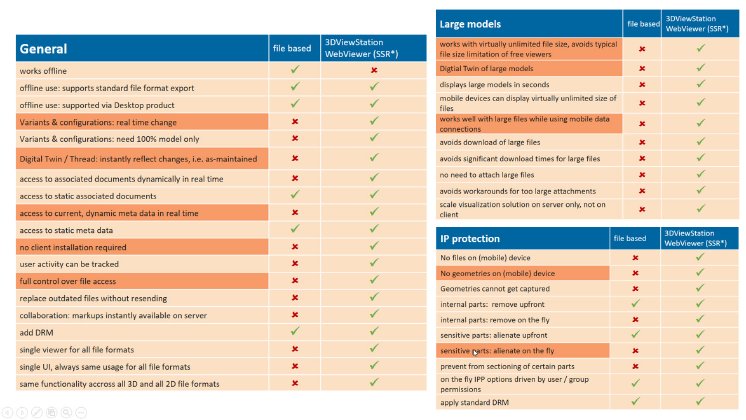“If we dive into the details then we will find that there are many more arguments for online visualization than against it. Here are a few examples: while working with online visualization, it is much easier to switch between variants and configurations, implementing the digital twin requires high flexibility to change structures over a lifetime (something that is impossible to do when working file-based), if a design changes after a recipient downloads, they will continue to work with outdated information unless they are personally contacted, this is not an issue when working online as it is continuously updated. Finally, there is no need for an installation of one or several local viewers and we do not have to worry about having enough RAM or graphics power for the user’s device as our KISTERS 3DViewStation WebViewer renders all documents and geometries on the server.” said Jim Eardly, KISTERS North America Sales Manager. “This server typically runs with a single local cache for all users, allowing very fast load times, and gives full control over all files as well as traceability of activities around this data. Not streaming any geometries down to the client device is the key intellectual property (IP) protection mechanism. We can combine it with IP protection tools such as: removing invisible parts or alienating geometries, even on the fly.”
“The advantages of online over offline visualization become even more apparent in the case of ultra large designs. The only way to visualize such massive designs on a mobile device (with limited resources, connected to the internet via an average mobile data connection) is to use online visualization in combination with server-side rendering, like 3DViewStation WebViewer has been offering for years. We can visualize complete ships or plants consisting of millions of parts on a smartphone in mere seconds. In these cases, the visualization file would have most likely been too large to store on such a device and therefore 3DViewStation WebViewer solves this issue: a simple link, no attachment and no download.” he added. “At the same time, KISTERS 3DViewStation WebViewer ships with high level APIs, which make it easy to integrate it with any leading application. We give customers the choice to embed WebViewer into the UI of their application or leverage the full or customized UI. We use these APIs ourselves with our application: VisShare. A tool that simplifies sharing even complex CAD data & documents leveraging web technologies.”
Known for its modern user-interface, high performance viewing, advanced analysis and integration capabilities into leading systems, 3DViewStation ships with current and mature importers for a broad range of 3D and 2D formats including i.e. Catia, NX, Creo, SolidWorks, SolidEdge, Inventor, Revit, JT, 3D-PDF, STEP, DWG, DXF, DWF, MS Office and many more.
The latest developments of 3DViewStation can be reviewed in more detail at: https://www.3dviewstation.com/blog.html.
According to Eardly, KISTERS 3DViewStation is continuously enhanced in response to customer needs and requirements. It is available as Desktop, ActiveX, VR-Edition and HTML5 WebViewer product-versions. All product flavors are intended to be used together with a PLM, ERP or other management system product configuration or service and spare part applications, providing all necessary APIs. For cloud, portal and web-solutions, there is an HTML5-based WebViewer solution available, which does not require client installation. All file formats can be used in combination with the intelligent navigation and hyperlinking features to address the needs of complex integration scenarios.


